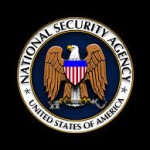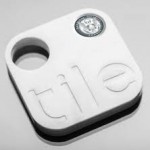– If you liked what I posted yesterday, you’l love today.
– dennis
= = = = = = = = = = = = = = = = = = =
Computer users pass around USB sticks like silicon business cards. Although we know they often carry malware infections, we depend on antivirus scans and the occasional reformatting to keep our thumbdrives from becoming the carrier for the next digital epidemic. But the security problems with USB devices run deeper than you think: Their risk isn’t just in what they carry, it’s built into the core of how they work.
That’s the takeaway from findings security researchers Karsten Nohl and Jakob Lell plan to present next week, demonstrating a collection of proof-of-concept malicious software that highlights how the security of USB devices has long been fundamentally broken. The malware they created, called BadUSB, can be installed on a USB device to completely take over a PC, invisibly alter files installed from the memory stick, or even redirect the user’s internet traffic. Because BadUSB resides not in the flash memory storage of USB devices, but in the firmware that controls their basic functions, the attack code can remain hidden long after the contents of the device’s memory would appear to the average user to be deleted. And the two researchers say there’s no easy fix: The kind of compromise they’re demonstrating is nearly impossible to counter without banning the sharing of USB devices or filling your port with superglue.
“These problems can’t be patched,” says Nohl, who will join Lell in presenting the research at the Black Hat security conference in Las Vegas. “We’re exploiting the very way that USB is designed.”
Nohl and Lell, researchers for the security consultancy SR Labs, are hardly the first to point out that USB devices can store and spread malware. But the two hackers didn’t merely copy their own custom-coded infections into USB devices’ memory. They spent months reverse engineering the firmware that runs the basic communication functions of USB devices—the controller chips that allow the devices to communicate with a PC and let users move files on and off of them. Their central finding is that USB firmware, which exists in varying forms in all USB devices, can be reprogrammed to hide attack code. “You can give it to your IT security people, they scan it, delete some files, and give it back to you telling you it’s ‘clean,’” says Nohl. But unless the IT guy has the reverse engineering skills to find and analyze that firmware, “the cleaning process doesn’t even touch the files we’re talking about.”
The problem isn’t limited to thumb drives. All manner of USB devices from keyboards and mice to smartphones have firmware that can be reprogrammed—in addition to USB memory sticks, Nohl and Lell say they’ve also tested their attack on an Android handset plugged into a PC. And once a BadUSB-infected device is connected to a computer, Nohl and Lell describe a grab bag of evil tricks it can play. It can, for example, replace software being installed with with a corrupted or backdoored version. It can even impersonate a USB keyboard to suddenly start typing commands. “It can do whatever you can do with a keyboard, which is basically everything a computer does,” says Nohl.
The malware can silently hijack internet traffic too, changing a computer’s DNS settings to siphon traffic to any servers it pleases. Or if the code is planted on a phone or another device with an internet connection, it can act as a man-in-the-middle, secretly spying on communications as it relays them from the victim’s machine.
Most of us learned long ago not to run executable files from sketchy USB sticks. But old-fashioned USB hygiene can’t stop this newer flavor of infection: Even if users are aware of the potential for attacks, ensuring that their USB’s firmware hasn’t been tampered with is nearly impossible. The devices don’t have a restriction known as “code-signing,” a countermeasure that would make sure any new code added to the device has the unforgeable cryptographic signature of its manufacturer. There’s not even any trusted USB firmware to compare the code against.
The element of Nohl and Lell’s research that elevates it above the average theoretical threat is the notion that the infection can travel both from computer to USB and vice versa. Any time a USB stick is plugged into a computer, its firmware could be reprogrammed by malware on that PC, with no easy way for the USB device’s owner to detect it. And likewise, any USB device could silently infect a user’s computer. “It goes both ways,” Nohl says. “Nobody can trust anybody.”
– More… ➡

